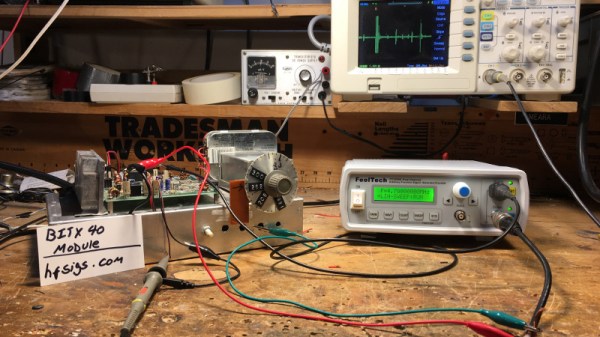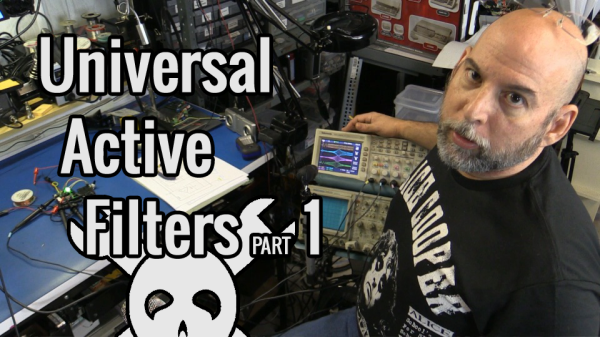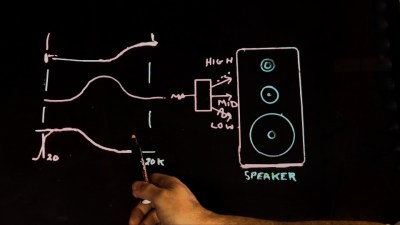The must-have accessory on a modern all-singing, all-dancing amateur radio transceiver is a panadaptor. Inevitably driven by SDR technology, it’s a view of a band in the frequency domain, and it will usually be displayed as a “waterfall” giving a time dimension to see transmissions over a period.
[Bill Meara, N2CQR] reminds us that panadaptors are nothing new, indeed that they date back to the first half of the last century and don’t even need an SDR to work. And to prove it, he’s produced one for part of the 40-metre amateur band.
The principle behind an analogue panadaptor is simple enough, it’s a normal receiver whose local oscillator is given a linear periodic sweep over the desired frequency band and whose output drives the Y axis of an oscilloscope whose X axis is driven by the sweep. In [Bill]’s case the receiver is a BitX homebrew transceiver, and the swept local oscillator is provided by his Foeltech signal generator. A neat touch comes in the ‘scope being synchronised by triggering on a marker frequency at the bottom of the range being swept. He’s created a video showing it in action, which you can see below the break.
There are quite a few routes into making this type of simple spectrum analyser, indeed some of us have tried ti with TV tuners.
















